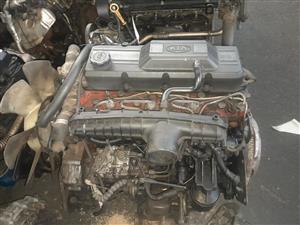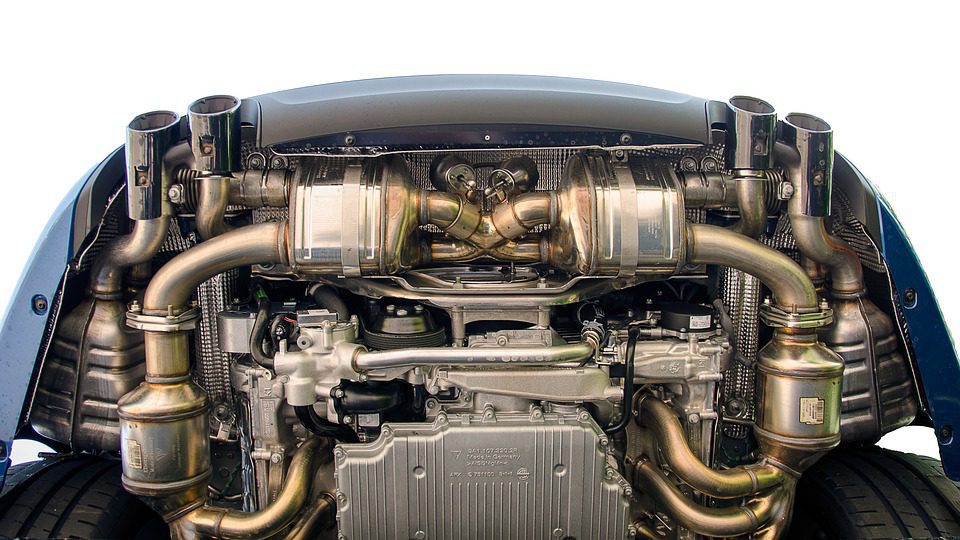Locating the Best Offers on Opel Corsa Engine Components
Exploring the Inner Operation of a Compact Automobile's Engine System
As chauffeurs, we often take for provided the detailed procedures that take place within the boundaries of our vehicle's engine system. In this expedition of a compact car's engine system, we will untangle the inner operations of this mechanical symphony, dropping light on the enigmas that drive us onward on our daily trips.
Combustion Process Introduction
The burning process in a small vehicle's engine system is an essential device that efficiently converts fuel into power to power the automobile. This process takes place within the burning chamber of the engine, where fuel and air mix, fire up, and produce regulated surges. The combustion procedure is composed of four primary phases: consumption, exhaust, compression, and power.
During the intake phase, the piston relocates downward, attracting a blend of air and gas into the burning chamber. The next stage, compression, includes the piston moving up, pressing the air-fuel mix to enhance its effectiveness. Consequently, in the power phase, the ignition system stirs up the compressed mixture, causing a rapid development of gases that compels the piston back down. This down movement produces the power required to drive the car. Ultimately, in the exhaust stage, the burned gases are gotten rid of from the burning chamber with the exhaust shutoff, preparing the chamber for the following cycle. This cyclic burning procedure is basic to the procedure of a compact car's engine system, making certain reliable energy conversion for propulsion.
Piston and Cyndrical Tube Interaction

The piston's accurate fit within the cylinder is vital for keeping ideal compression and protecting against power loss throughout combustion. Limited clearances between the piston and cyndrical tube wall surfaces make certain efficient sealing, enabling the piston to relocate efficiently without enabling gases to leakage past. Correct lubrication is likewise vital to decrease friction and put on in between these parts, enhancing longevity and efficiency.
In addition, the design and materials utilized in making the piston and cylinder influence engine effectiveness and toughness. Modern engines usually utilize light-weight yet durable products like aluminum alloys for pistons and cyndrical tube linings to minimize inertia and enhance thermal performance. On the whole, the unified communication in between the piston and cyndrical tube is essential to the engine's functionality and overall efficiency.
Gas Injection System Functionality
Fuel shot systems in portable automobile engines play an important function in specifically supplying gas to the burning chamber for regulated and reliable ignition. The gas injection system functions by infusing fuel into the combustion chamber at the optimal minute during the engine's operation (opel corsa engine). This exact timing guarantees that the gas mixes uniformly with the air for correct burning, causing boosted gas performance and lowered exhausts
There are primarily 2 types of gas injection systems made use of in small vehicle engines: port gas moved here shot (PFI) and direct fuel shot (DFI) PFI systems infuse fuel right into the intake port prior to the consumption valve, while DFI systems inject gas directly right into the combustion chamber. Both systems have their benefits, with DFI offering far better gas atomization and PFI offering a more cost-efficient service.
Comprehending Engine Air Conditioning Devices
Efficient operation of a small car's engine relies greatly on the effectiveness of its cooling devices. The air conditioning system in a small vehicle generally is composed of numerous parts working together to control the engine temperature level. Comprehending these engine cooling devices is important for keeping the performance and longevity of a portable automobile's engine system.

Exhaust System Components Explained
The optimal performance of a small lorry's engine cooling mechanisms depends upon a complementary system referred to as the exhaust system, which makes up various important components for making certain effective emissions and engine performance. The exhaust system consists of parts such as the exhaust manifold, catalytic converter, muffler, and tailpipe. The exhaust manifold accumulates exhaust gases from the engine's routes and cyndrical tubes them to the catalytic converter. The catalytic converter after that transforms harmful pollutants in the exhaust right into less harmful discharges before launching them with the muffler and tailpipe.
One vital component of the exhaust system is the oxygen sensor, which keeps an eye on the oxygen degrees in the exhaust gases to aid manage gas intake and ensure optimum engine efficiency. opel corsa engine. Additionally, the resonator may Get More Info exist in some exhaust systems to minimize noise levels. Generally, the exhaust system plays an essential duty in preserving engine effectiveness, decreasing dangerous discharges, and ensuring a quieter driving experience for compact car proprietors

Conclusion
To conclude, the portable vehicle's engine system is an intricate mix of parts that interact to help with the burning procedure, convert gas right into power, and remove waste gases. Recognizing the internal workings of the engine system, including the piston and cylinder interaction, fuel injection system, engine cooling mechanisms, and exhaust system components, is important for keeping ideal efficiency and performance of the lorry.
The burning process in a small automobile's engine system is a critical device that successfully converts fuel into power to power the car.Fuel shot systems in compact automobile engines play an essential role in precisely delivering gas to the combustion chamber for regulated and reliable ignition.There are mostly two types of gas shot systems utilized in portable vehicle engines: port fuel shot (PFI) and direct fuel injection (DFI) Understanding these engine cooling mechanisms is important for maintaining the performance and durability site web of a portable vehicle's engine system.
The optimum performance of a compact car's engine cooling devices depends on a corresponding system understood as the exhaust system, which comprises different crucial elements for making sure reliable exhausts and engine performance.